The migrant vote is of interest in all states, but in Delhi assembly election, it is crucial. Why is the BJP banking on Manoj Tiwari, a migrant leader from Uttar Pradesh, in the national capital to take on the Arvind Kejriwal-led Aam Aadmi Party? Nearly four out of ten inhabitants of Delhi are migrants. In no other state do migrants make up a greater share of the population.
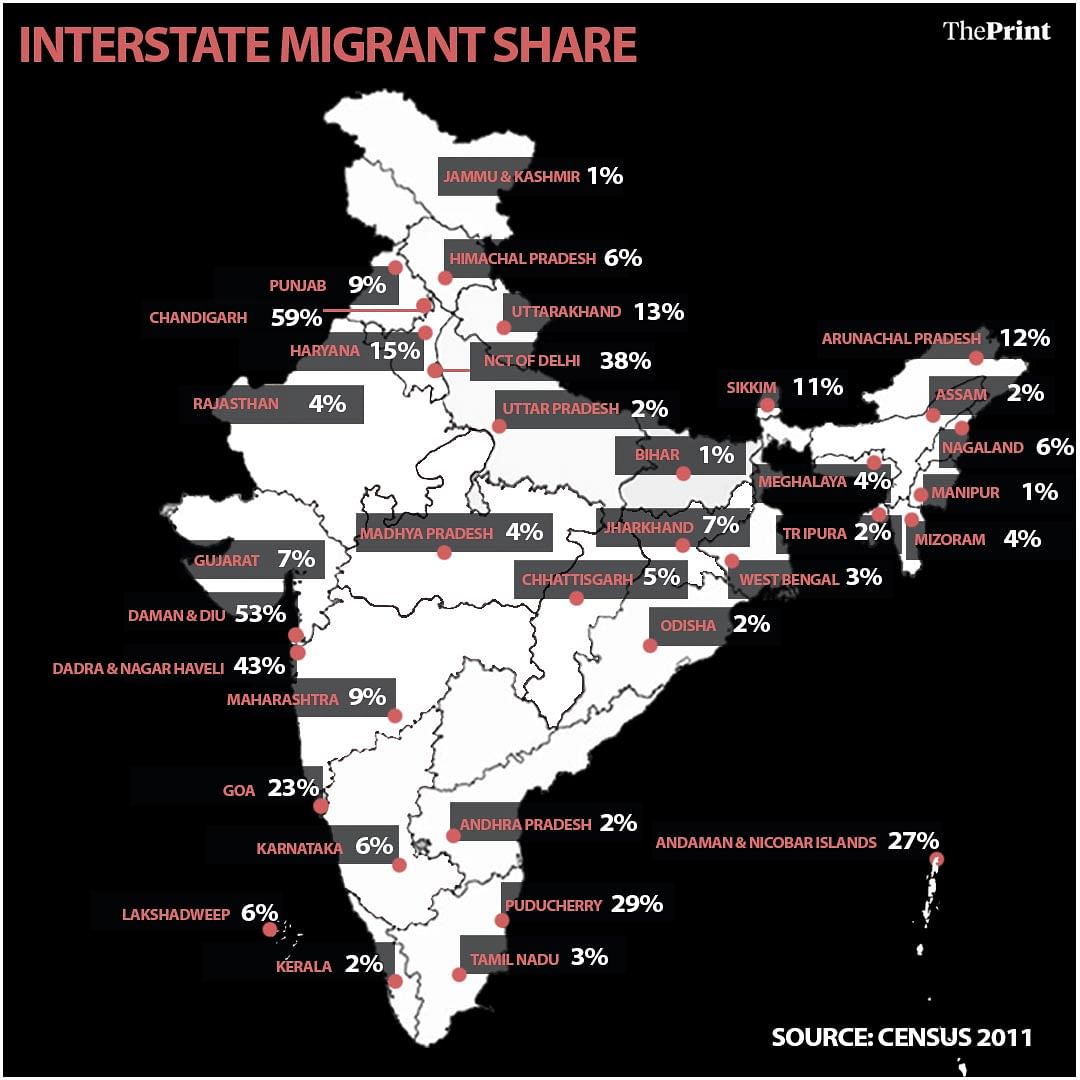
Delhi domination
While refugees of Partition and migrants from Punjab shaped migration to Delhi in the early decades after Independence, migrants from Uttar Pradesh (UP) and Bihar dominate Delhi’s population landscape, as they have for several decades now. Two out of every three migrants in Delhi were born in either UP or Bihar.
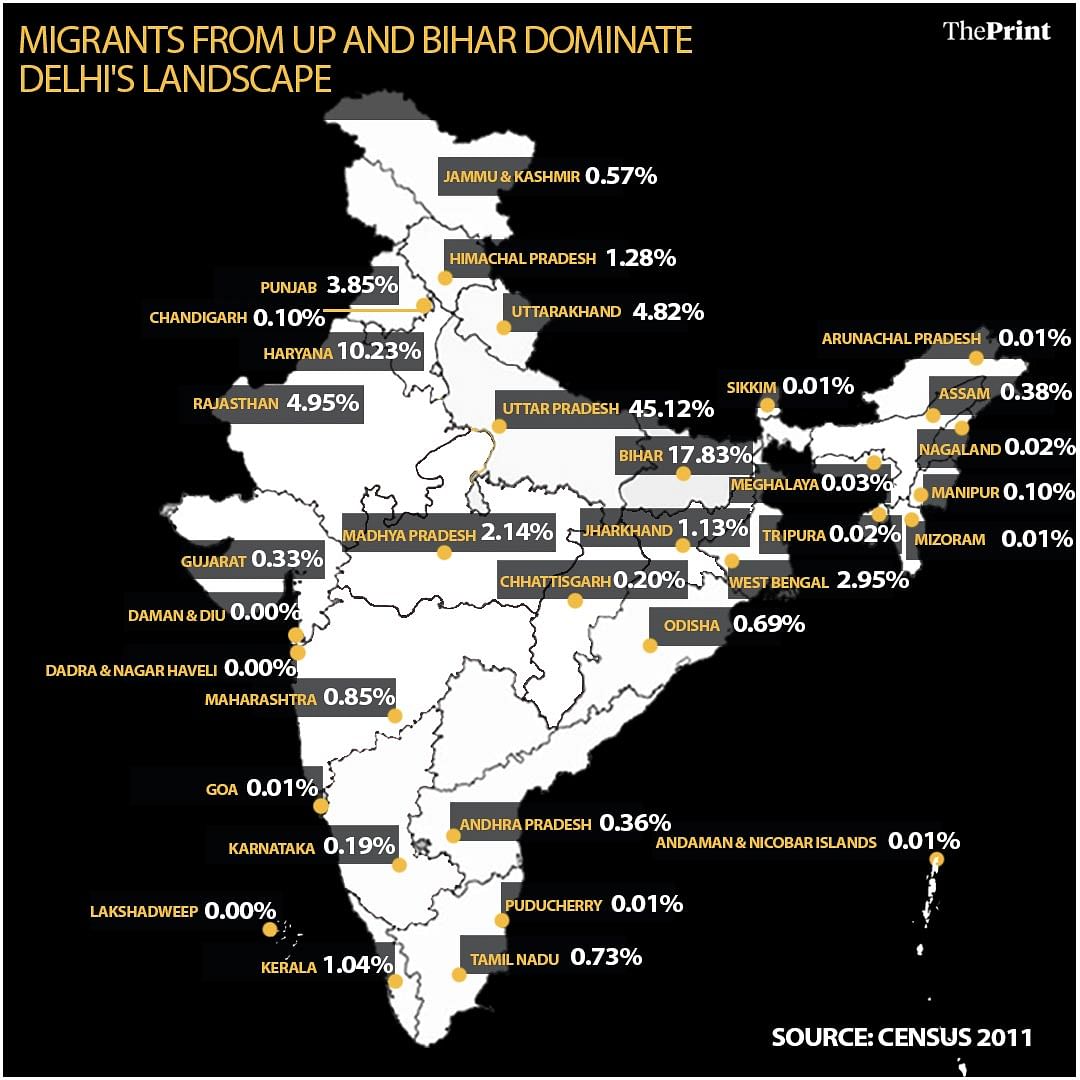
This pattern is likely to continue for some time — even in the most recent decade for which Census data is available, two out of every three new migrants to Delhi were from UP and Bihar. The proportion of Bihari migrants in particular has grown.
Migrants now make up over 40 per cent of three Delhi districts — New Delhi, South and South West. Over five lakh migrants from UP live in the North West, North East and South districts each; and over two lakh migrants from Bihar live in the North West, South West and South districts.
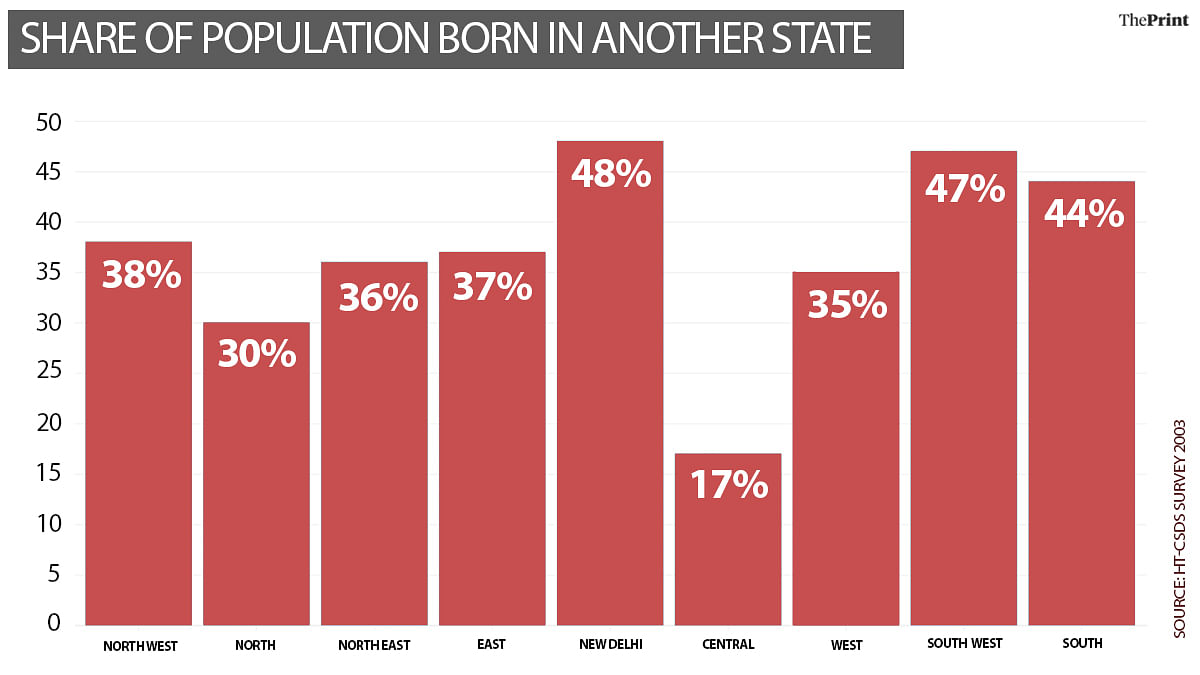
But their settlements are not uniform — all districts have migrants from UP, but they absolutely dominate the North East district largely made up of impoverished working-class areas and slums, including Seelampur, Seemapuri, Burari and Timarpur. Seelampur is India’s most densely populated district, with over 36,000 people per sq km. Migrants from UP make up over 75 per cent of North East Delhi’s migrant population.
Migrants from Haryana are substantial in the North West and South West parts of the city; in these two districts, in fact, migrants from Punjab and Haryana together outnumber those from Bihar. Migrants from south India, much fewer in number, are concentrated in the East (regions like Mayur Vihar and Patparganj) and central districts.
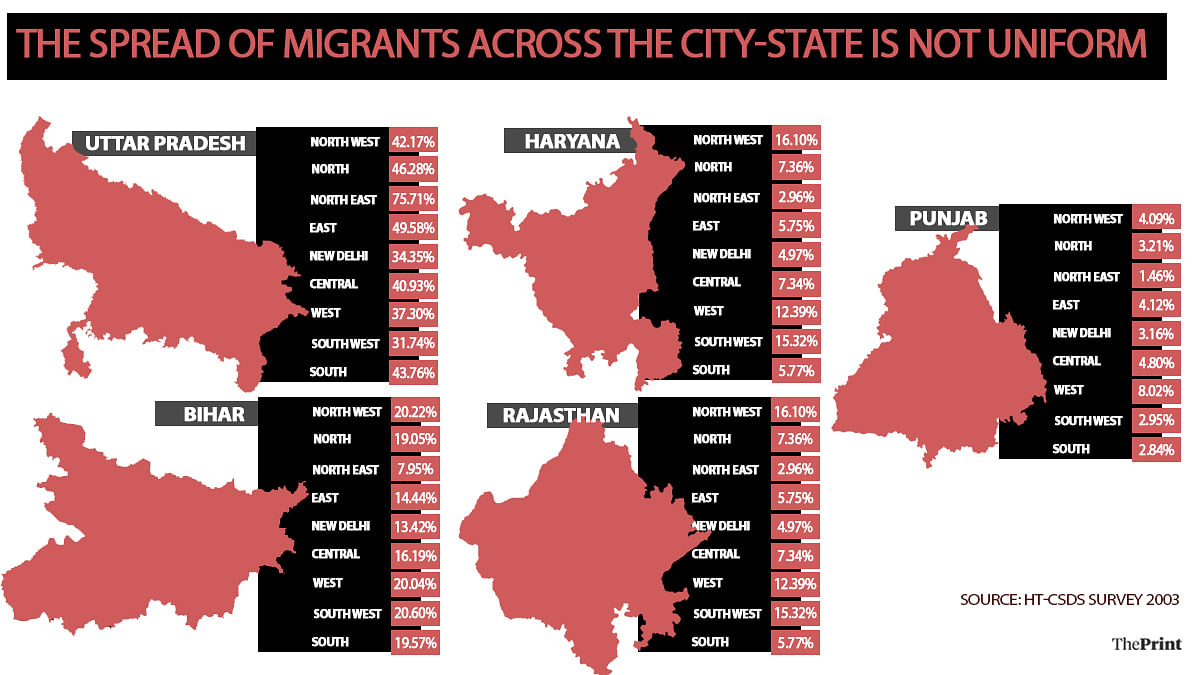
Also read: Kejriwal ducks Team Shah’s bodyline bowling in Delhi, but slog overs will test his patience
Politics and migrant geographies
Administrative lines intersect politics where constituency boundaries are drawn. In his book Changing Electoral Politics in Delhi, social scientist Sanjay Kumar, former director of the Lokniti programme at the Delhi-based Centre for the Study of Developing Societies (CSDS), draws upon a 2003 CSDS survey of Delhi’s residents to identify the intersection of the migrant geographies of Delhi and its politics. There are 16 assembly constituencies in Delhi that are dominated by migrants from UP and Bihar, Kumar writes, including Burari, Adarsh Nagar, Wazirpur, Badarpur, and Seelampur. Even though the proportion of voters belonging to the Punjabi community has declined, they are still a sizeable proportion in 17 constituencies in the South, West, and New Delhi districts. Jats and Gujjars from Rajasthan and Haryana dominate 11 constituencies in the North West and West districts. Another 27 are more “mixed” constituencies.
This has a significant effect on Delhi’s politics, writes Kumar. “The Jats and Punjabi Khatris still have their hold on city politics, but over a period of time, different political parties have come to see the migrants as a vote bank and tried to woo them for their support,” he writes.
Also read: India’s internal migrants had no say in 2019 polls. They probably won’t in 2024 either
Voter loyalty
When analysing the vote preferences of migrants, the question usually is about whether the migrant will “give in” to appeals to her identity or issues that affect her more materially. This certainly is how the Aam Aadmi Party (AAP) both positions itself and is analysed: for poor and lower middle-class voters, including migrants, basic necessities, including access to health and education, will matter more than overt appeals to identity, and so it can doggedly refuse to engage in public debates around key issues thrown up by the BJP’s policies — most recently the question of citizenship and Muslim margnisalisation arising out of the Citizenship Amendment Act.
This is of course not strictly honest — the AAP roped in its Rajya Sabha MP Sanjay Singh to make an overt outreach to Purvanchal (eastern UP) voters. While launching the campaign to woo the migrants, he said that “the AAP government has fulfilled the long demand of the Purvanchali community by declaring holiday on Chhath Puja. We have been giving recognition to Maithili language. We have introduced it in school curriculum, a feat which even Bihar government has not been able to achieve.” This was in no small part to make up for the backlash against party convener Arvind Kejriwal complaining that Biharis were taking trains to Delhi to seek free treatment.
Of course, there are electoral gains to be made from focusing on “material issues” too. In Delhi, there is a strong correlation between income and state of origin. Families descended from Partition refugees are now more likely to be rich or middle class, while those from UP and Bihar, in particular, are poor, poorly educated and with low-skilled precarious jobs.
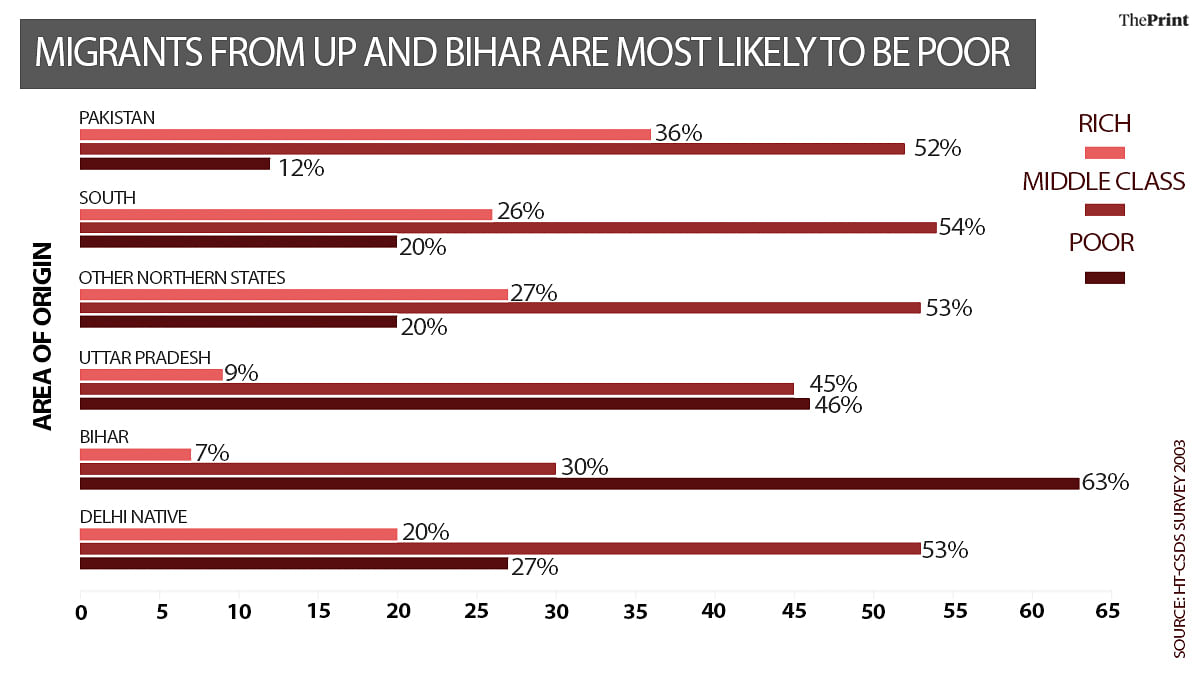
Also read: The Indian election story of focussing on NRI voters, not doing enough for domestic migrants
Mood back home
A crucial aspect that this ‘identity vs issues’ narrative misses is that migrants might also be affected by the political mood in their home states, even though they may have migrated.
There is little study of the voting preferences of migrants, but a small sub-sample of Delhi’s migrant voters exists via the CVoter tracking database. This survey indicates that migrants from some states have strong vote preferences, aligned in some ways with the mood in their home states. For instance, the lowest preference for the BJP among migrant voters in the 2015 Delhi assembly election as well as today is among voters originally from Kerala, the CVoter numbers indicate (the numbers are only indicative as the sample sizes are small). In fact, preference for the AAP is higher than the Delhi average across voters from the southern states. Preference for the AAP among Delhi natives and migrants from UP and Bihar, on the other hand, more or less tracks the state average.
As of early January 2020, it would appear that the AAP has successfully retained the focus on its performance on service delivery in Delhi, while performing more traditional migrant outreach on the side. If migration to Delhi continues at its current modest pace, continuing to slowly alter Delhi’s demographics, this contestation may become a growing part of its politics.
The author is a Chennai-based data journalist. Views are personal.


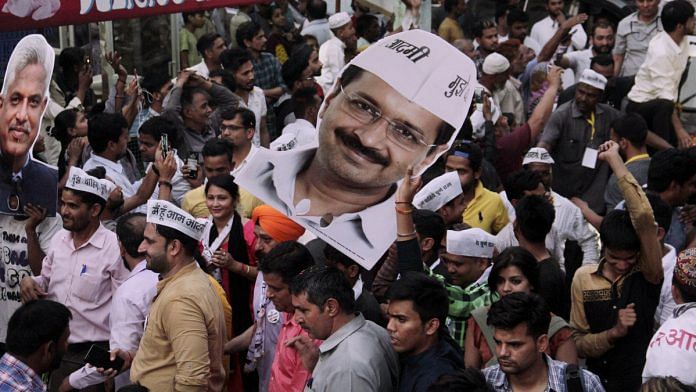

These were the migrants from Purvanchal, who game the massive victory to AAP in the past elections, lured by the unique attractive slogans of Krjariwal . Also Kejariwal was then seen as a young, noncorrult agitating leader. His this image also gave him the support of masses. But now he has to prove his worth.